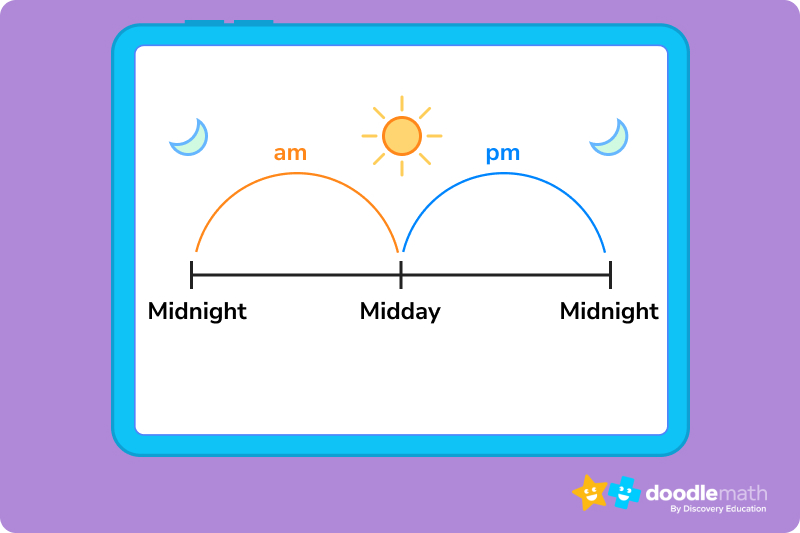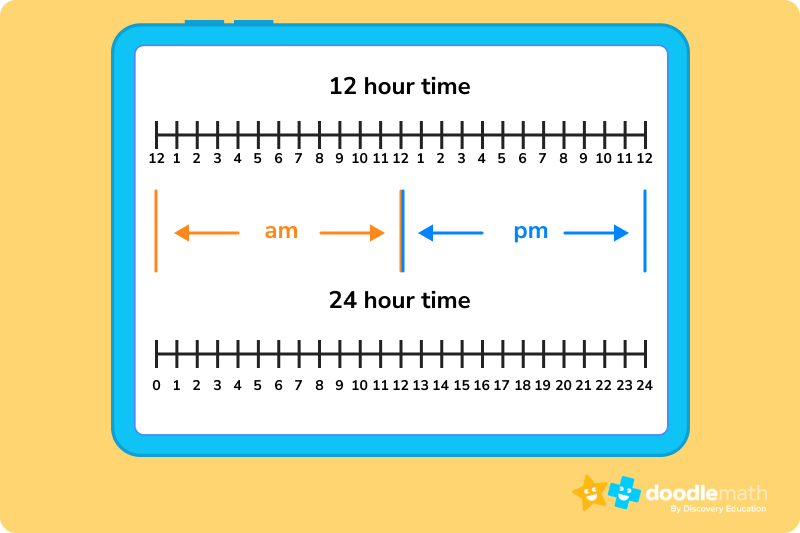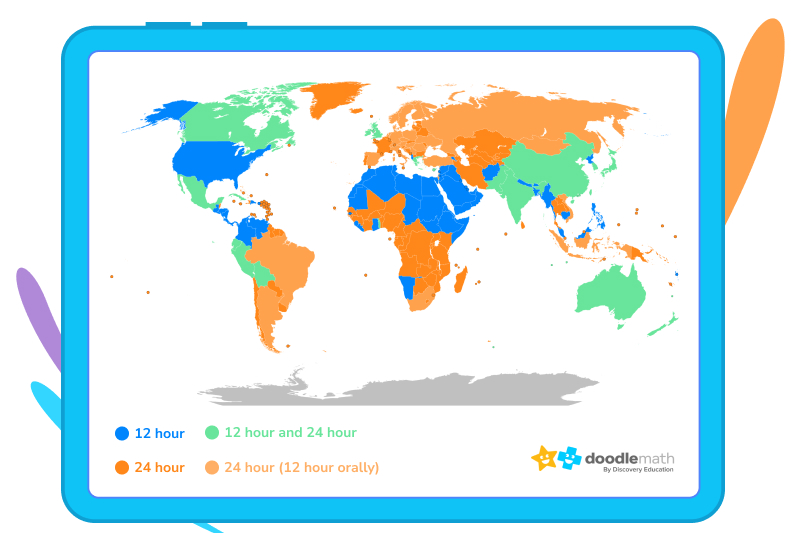

Easy definitions for AM and PM and the story behind how we tell time today!

Author
Tess Loucka
Published
October 20, 2023


Easy definitions for AM and PM and the story behind how we tell time today!

Author
Tess Loucka
Published
Oct 20, 2023


Easy definitions for AM and PM and the story behind how we tell time today!

Author
Tess Loucka
Published
Oct 20, 2023


Key takeaways
Since ancient Egypt was a flourishing civilization, the 12-hour clock has been in use. Initially, the first half of the day was tracked using the sun’s cycle while the second half was tracked using the moon’s cycle.
Over time, these two cycles developed into what we refer to as AM and PM — the two terms that keep us on track and on time every day!
Understanding how AM and PM work is key to being able to tell time and do it confidently, but what exactly does AM and PM stand for?
The abbreviations a.m. and p.m., also written as AM and PM, are used to differentiate times in the first half of the day from times in the second half of the day.

As you can see, the a.m. meaning and p.m. meaning refer to different parts of the day.
So, what does AM stand for? The term a.m. stands for ‘ante meridiem’, which is Latin for ‘before midday’.
What does PM stand for? The term p.m. stands for ‘post meridiem’, meaning ‘after midday’. Pretty straightforward, right?
At this point, you may be wondering, “What time is midday?”. Worldwide, midday is 12:00. We also refer to midday as ‘noon’ and write it as 12:00 PM. If you use the 24-hour clock, drop PM when writing the time. Midday is when the sun is at the highest point in the sky.
Both a.m. and p.m. refer to a 12-hour period. The first 12-hour period lasts from midnight to midday (or noon). That’s 12:00 a.m. to 11:59 a.m.
The second 12-hour period lasts from midday to midnight. That would be 12:00 p.m. to 11:59 p.m.
Unlock unlimited maths questions
Put your learning into practice with fun exercises + games that are proven to boost ability!
Get 2 FREE weeks of Doodle!
Use code 2WKS_2026 to enjoy unlimited questions and games
Get 1 FREE month of Doodle!
Use code MONTH_2026 to enjoy unlimited questions and games
Have a go at some DoodleMaths questions
Select a year group
Since the purpose of using a.m. and p.m. is to differentiate between the first half of the day and the second half on 12-hour clocks, there is no need for them when using a 24-hour clock.

12-hour clocks repeat hour numbers while 24-hour clocks don’t.
24-hour time is the default for time-keeping in most countries.

But why do some countries use a 12-hour clock while others use a 24-hour clock?
In 1876, Sir Sandford Fleming, a railway engineer and inventor, missed his train while travelling in Ireland because a misprint on his ticket said p.m. instead of a.m. After that, he proposed that all train stations use the more straightforward 24-hour clock instead!
This idea was brought to Washington D.C. during the International Meridian Conference of 1884, where it was adopted and shared with delegates from 26 countries around the world.
By 1893, the 24-hour clock was adopted by Italy, and soon after, nearly every European country had started using the 24-hour clock as well!
Want to have a go at some questions? DoodleMaths is an app that’s filled with fun games and exercises all about time, as well as subtracting, dividing and more!
Created by teachers, it’s fully aligned to the primary maths curriculum and breaks down learning into small, bitesize chunks, building a solid foundation of understanding.
Best of all, it rewards effort over ability and is filled with interactive topic explanations, letting your child work independently. Try it for free today!

There are three rules to follow when converting 12-hour time to 24-hour time:

To convert 24-hour time to 12-hour time, just take the previous steps and do them backward!

Practice telling time using a 24-hour clock with DoodleMaths! Get questions right and earn gold stars!
Even more practice problems
Answer: 8:00
Times between 1:00 a.m. and 12:59 p.m. are the same on both a 12-hour and 24-hour clock. You just have to remove the a.m. or p.m. So, 8:00 a.m. would be written as 8:00.
Answer: 3:00 p.m.
To convert times between 13:00 and 23:59 on a 24-hour clock to a 12-hour clock, you have to subtract 12 hours and write p.m. at the end. 15:00 – 12 hours is 3:00. Write p.m. at the end to get 3:00 p.m.
Answer: 2:00 p.m. according to 12-hour time, or 14:00 according to 24-hour time.
One and a half hours after 12:30 p.m. is 2:00 p.m. To convert that to 24-hour time, just add 12 hours and get rid of the p.m. 2:00 + 12 hours is 14:00.
AM stands for ante meridiem, which is Latin for ‘before midday’.
PM stands for post meridiem, which is Latin for ‘after midday’.
Morning AM is used to refer to the first half of the day, from midnight to midday, which includes all of the morning hours.
12 A.M. is the first hour of the morning on a new day. 12 A.M. is also called midnight.
Morning is the time between sunrise and midday, or 12:00 PM.
The evening is usually considered to take place between 6:00 PM and 9:00 PM.
The afternoon takes place from noon to 6:00 p.m.
For the most part, North America, Australia, India, the Philippines, Columbia, Egypt, and Saudi Arabia use 12-hour time. Most other countries use 24-hour time.
AM and PM can be capitalised, but they don’t have to be. It depends on the writing and editing style you’re using.

Parents, sign up for a DoodleMaths subscription and see your child become a maths wizard!

Lesson credits

Tess Loucka
Tess Loucka discovered her passion for writing in school and hasn't stopped writing since! Combined with her love of numbers, she became a maths and English tutor. Since graduating, her goal has been to use her writing to spread knowledge and the joy of learning to readers of all ages.

Tess Loucka
Tess Loucka discovered her passion for writing in school and hasn't stopped writing since! Combined with her love of numbers, she became a maths and English tutor. Since graduating, her goal has been to use her writing to spread knowledge and the joy of learning to readers of all ages.
How to improve at mental maths
Learn some handy mental maths strategies that’ll make addition a breeze!
A guide to the KS1 maths curriculum
Discover all the topics children are introduce to in KS1 maths
Book a chat with our team
If you’d like to use Doodle’s browser version, please visit this page on a desktop.
To log in to Doodle on this device, you can do so through our apps. You can find out how to download them here: